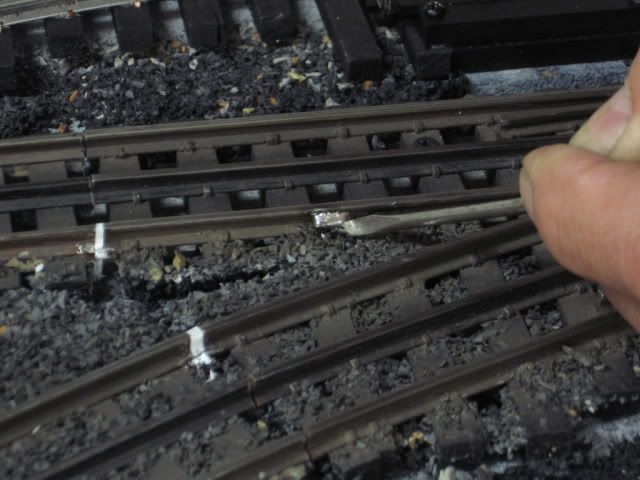Mike,
I have two TIU's and two ZW-L's and I am 110% happy with them. I have the four outputs of each ZW-L connected to the four inputs of each of the TIU's. Initially, I had Z-4000, but did not like the lack of regulation. With the ZW-L's, I adjust their outputs to the maximum (about 18.6 v if memory serves me right) and forget about it.
I divided my mains into approximately 20 to 30-foot districts (or blocks) and power each district independently. I have 20 such districts plus 26 sidings and spurs. I used the plastic joiners to isolate the center rails, and the metal (gold and black) joiners for the outer rails. Note than in addition to what Mike CT said above, the outer rails can also be isolated to detect trains in a block; but that is another topic.
One thing to keep in mind is how you plan to turn On/Off the track districts and blocks. You mentioned toggle switches, and that is the way to go; HOWEVER, if you have long runs of wire between the TIU's, the tracks, and the control panel where you intend to mount your toggles switches, you may experience some voltage drops.
Here is what I did:
• I used 12AWG wires from the ZW-L's to the TIU's, and these were 60-ft runs; one around the layout, and the other over the ceiling. I located the TIU's to minimize the wire runs from them to the tracks, so each one serves about half of the layout.
• 14 AWG wires from the TIU's to the eight terminal blocks. These runs were no longer than 20-ft.
• 16 AWG wire from the terminal blocks (actually, relay modules) each of which supplies six tracks, for a total of 48, and these wire runs are between 6-ft and 12-ft.
The relay modules (six or eight relays each) allow the track power wires to be a short as possible since the wires do not go to the toggle switches, and back. I used 22AWG wires from the control panel toggle switches to the relays to turn them, and hence the tracks, On/Off.
I initially used automotive type relays with 12VDC coils, which cost around $5 each. But before I had them all done, I changed to relay modules I bought from e-bay, and like them better. These relay modules require 5VDC for the relay coils, and are pre-wired, include some protection (for the relays) and also have LED's to tell when the relays are On/Off. The ones I bought cost me $10.28, shipped, for a module with eight relays, which is $1.29 per relay!
Anyway, good luck and do not hesitate to ask any other questions.
Alex
PS. Edited to add:
If you have not already done so, do get Barry's DCS book! I have the pdf version, and really like the ability to search using keywords for the specific topic I need.









